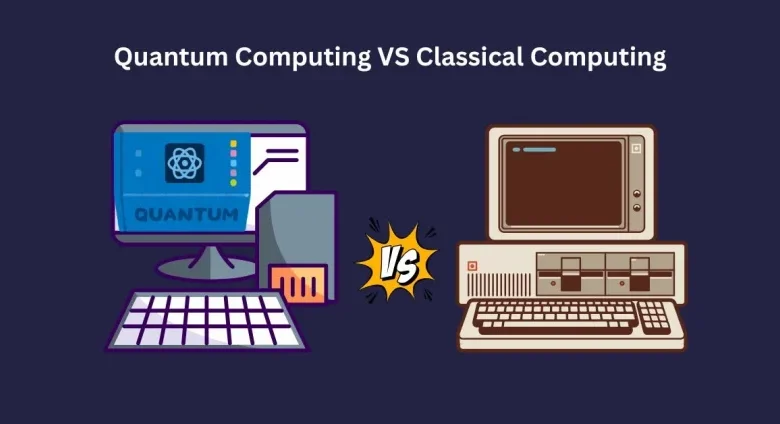Quantum Vs Classical: the Next Era of Computing Power Explained

The transition from classical to quantum computing signifies a pivotal shift in computational capabilities. Classical systems rely on bits, processing information sequentially, while quantum systems utilize qubits, enabling simultaneous calculations through superposition and entanglement. This fundamental difference opens new avenues for complex problem-solving. However, significant hurdles remain, particularly in error correction and qubit stability. Understanding these distinctions and challenges is crucial in anticipating the future landscape of computing technology. What implications might these advancements hold?
Understanding Classical Computing
Classical computing, the bedrock of modern technology, operates on the principles of binary logic, where data is represented as bits that can exist in one of two states: 0 or 1.
These binary systems facilitate complex calculations. However, they encounter computational limits, particularly in processing vast datasets or executing parallel tasks, which constrains efficiency and scalability in an increasingly data-driven world.
The Principles of Quantum Computing
The principles of quantum computing are fundamentally rooted in the concepts of quantum bits, or qubits, which differ significantly from classical bits.
Key phenomena such as superposition and entanglement enable qubits to perform complex computations simultaneously, offering a potential advantage over classical systems.
An overview of quantum algorithms further illustrates how these principles can be harnessed to solve specific problems more efficiently than traditional computing methods.
Quantum Bits Explained
Quantum bits, or qubits, serve as the fundamental units of information in quantum computing, fundamentally differing from classical bits.
Unlike classical bits, which represent either a 0 or 1, qubits can exist in multiple quantum states simultaneously.
This property enables complex qubit interactions, allowing quantum computers to perform calculations at unprecedented speeds, harnessing the inherent power of quantum mechanics to process vast amounts of data efficiently.
Read also: The Human-AI Collaboration Revolution: How Automation Is Redefining Work
Superposition and Entanglement
While classical computing relies on binary states, the principles of superposition and entanglement define the unique capabilities of quantum computing. These phenomena allow quantum states to exist in multiple configurations, enhancing computational power.
Key aspects include:
- Superposition: Quantum bits can represent both 0 and 1 simultaneously.
- Entanglement: Quantum bits are interdependent, affecting each other instantaneously.
- Measurement effects: Observing a quantum state alters its configuration, influencing outcomes.
Quantum Algorithms Overview
Although classical algorithms have established frameworks for problem-solving, quantum algorithms leverage the principles of superposition and entanglement to achieve computational efficiencies unattainable by their classical counterparts.
They excel in quantum search and optimization problems, enhancing cryptography applications and machine learning.
Quantum algorithms also utilize simulation techniques for algorithmic speedup across complexity classes, striving for quantum supremacy while addressing challenges like error mitigation and probabilistic models.
Key Differences Between Quantum and Classical Systems
The fundamental distinctions between quantum and classical computing systems lie in their underlying principles and operational mechanisms.
Quantum systems leverage superposition and entanglement, enabling quantum supremacy, whereas classical systems are bound by classical limitations.
Key differences include:
- Information Representation: Qubits vs. bits
- Processing Power: Parallelism vs. sequential processing
- Error Correction: Quantum error rates vs. classical error correction methods
These differences delineate their respective capabilities.
Potential Applications of Quantum Computing
As researchers continue to explore the capabilities of quantum computing, numerous potential applications emerge across various fields, highlighting its transformative potential.
Quantum applications promise breakthroughs in optimization, cryptography, and drug discovery, enabling practical implementations that classical systems cannot achieve.
These advancements could revolutionize industries by solving complex problems more efficiently, ultimately unlocking new opportunities for innovation and enhancing computational capabilities beyond current limitations.
Challenges Facing Quantum Technology
Quantum technology faces significant challenges, particularly in error correction and scalability.
The inherent fragility of qubits makes it difficult to maintain coherence, complicating the implementation of effective error correction protocols.
Additionally, scaling quantum systems to a practical level presents logistical and technical hurdles that must be addressed for widespread adoption.
Error Correction Difficulties
Navigating the complexities of error correction poses significant challenges for the advancement of quantum technology. Effective error correction techniques are essential for achieving fault tolerance, yet they face inherent difficulties, including:
- The fragility of qubits and susceptibility to noise
- The overhead of additional qubits required for error correction
- The complexity of implementing scalable error correction protocols
These factors hinder progress in creating reliable quantum systems.
Scalability Issues
The challenges associated with error correction inevitably lead to significant scalability issues within quantum technology.
Scalability challenges arise from the need for increasingly complex architectures and the substantial resource limitations inherent in maintaining qubit coherence and entanglement.
As systems expand, managing these constraints becomes critical, ultimately impacting the feasibility of developing large-scale quantum computers capable of outperforming classical counterparts in practical applications.
The Future of Computing: What Lies Ahead
As advancements in computational technology continue to unfold, the future of computing presents a landscape rich with potential and uncertainty.
Technological predictions indicate several key areas of focus:
- Integration of quantum algorithms into existing systems
- Enhanced machine learning frameworks for real-time data processing
- Development of sustainable computing practices
Future advancements will redefine computational boundaries, fostering innovation and empowering a society that values freedom in technology.
Conclusion
In summary, the stark shift from classical to quantum computing signifies a significant step in computational capabilities. While classical systems operate on linear logic, quantum systems harness the mysterious mechanics of qubits, propelling potential applications into profound realms. However, persistent problems, including precision and performance, pose pressing challenges. As we stand on the precipice of this promising paradigm, the pursuit of perfecting quantum technology may pave the path to unprecedented possibilities and profound progress in computing.




